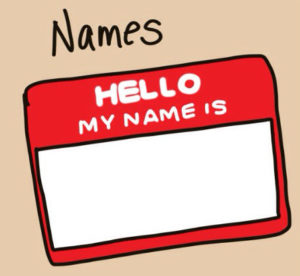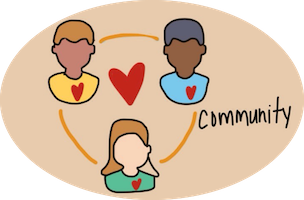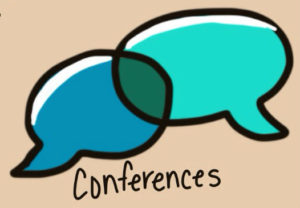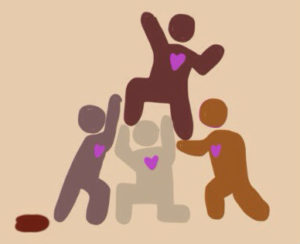5 Ways We Can Build Relationships with ELLs
A MiddleWeb Blog
 The middle grades are intimidating enough for kids. Add to that being new to the country or perceiving you are different than everyone else.
The middle grades are intimidating enough for kids. Add to that being new to the country or perceiving you are different than everyone else.
Students in the middle grades who are English language learners and especially newcomers (those who are new immigrants) can easily feel vulnerable in the classroom. Sometimes they feel like outsiders. This is a problem since belonging is one of the basic physiological needs we all have.
As learners it’s critical to feel like we belong and are accepted within the classroom community. Without that feeling, it’s difficult to feel safe enough to take chances in the learning environment.
It may feel like there is just too much at risk. It may even feel like being invisible is just safer than taking the risk and sticking out when the chance of failure seems too great.
ELLs need more than instruction. They also need emotional support. How can we build relationships with our ELLs to help them feel safe and allow learning to occur? These five easy-to-implement habits foster an inclusive, safe environment for all students.
-
Greeting

Now I’ve also seen fist bumps, which I like a lot better (less germs). The best door greetings are positive interactions where the teacher leans in, smiles, and looks at each student as they come in and greets them with a handshake/fist bump. Some even hold a short conversation. It sets the tone for the rest of the class period.
Where I’ve seen this go wrong is when we are distracted by a side conversation with a colleague or some other distraction and our full attention is not on the student. Kids at this age quickly notice what takes precedence. If we send a message that they are more important, they love it!
-
Names

Recently I met a child who had just arrived in the United States from Asia. When I asked her what her name was, she hesitated and I could see that she was thinking very hard. She slowly said, “Kit-ty” and then shook her head and said, “Nikki.” Her “American Name” was so new to her that she had not even memorized it herself yet.
I was saddened because I knew that wasn’t her name and she didn’t change it for herself. She changed it for others. We need to help our students feel safe enough to teach us their real names. It’s our responsibility to practice pronouncing them over and over again until we get them right.
Where I’ve seen this go wrong is when a student doesn’t correct a teacher for saying their name wrong. Some kids are too shy, or in their culture correcting a teacher is not acceptable. We have to explicitly ask students if we are saying their name correctly and ask them to pronounce it a time or two. Reaching out to parents might be an option as well.
-
Community

One way to build community in the classroom is to hold a class meeting on a regular basis. Some teachers do this daily while others hold their class meetings on Mondays and Fridays. It’s up to you. The class meeting is a 10-15 minute period of time where the class gathers in a circle to hold a discussion.
The physical arrangement is important because the circle allows for everyone to be included and heard. Some teachers pose a question or topic for discussion such as,
- What is something you are proud of this week?
- Share something you did over the weekend.
- How did you help someone recently?
It’s important to provide sentence stems and support for ELLs who might need a little scaffolding. ELLs who are reluctant to speak may need talking chips or rehearsal prior to the meeting. If an ELL doesn’t contribute to class meetings, visit with them individually and set a goal.
Tell them about the topic for the next class meeting and discuss what they might say. Give the student a couple of days to practice. Never force a student to talk if they are not ready. Once students are accustomed to this practice, the teacher can become the “guide on the side” just listening in as the class holds their own discussion.
Where I’ve seen this go wrong is if we walk away from the class meeting and no longer listen in. The further we are from the group, the further they can get from the topic. Students can veer away from appropriate conversation. The best idea is to stay near and facilitate the conversation.
-
Conferences

Holding a conference with an English learner is an entry point. It’s a conversation that helps to build a relationship with your student. When kids know that you genuinely care about them and are invested in their growth, they tend to want to do well.
While each conversation with a student will build your relationship with them, it may also serve another purpose. You may want to gather informal data on language development, find out how much they know about a particular skill or topic, or teach the student something new in a lower affective setting.
Some conferences can be super informal and very quick while others can last up to five minutes. Here’s an example with a brand new student. The teacher wants to assess the student’s language and begin to build a relationship.
Teacher: Hi Valentina. My name is Ms. _____. (Point to self) What is your name? (Point to Valentina)
Valentina: Valentina
Teacher: This is how we write HI (wave) in English. (Write HI and wave) Can you write HI in Serbian?
Valentina: (writes)
Teacher: How do you say HI in Serbian? (taps mouth and points outward)
Valentina: (says HI in Serbian)
Teacher: (repeats)
Where I’ve seen this go wrong is when we, as teachers, feel we don’t know what to say or how to communicate with a student who is learning English so we avoid the student completely. Keep in mind that non-verbals are important! If we avoid an ELL, we send them a message and it’s not a good one. Instead, smile, relax, take small steps and build a relationship.
-
Body Language

When our kids know that we are going to be patient with them, that we understand it may take them longer or that they need information in a different way, they will do better.
I always tell my ELLs, especially my older students, that I know they can read and write in …(insert language) and I will help them learn English. Sometimes they feel so defeated because they know the information in their native language, but they can’t read or write in English yet. It can be frustrating.
This is when they need understanding, caring teachers who will be patient and tell them it’s going to be okay. We will do this together. If we look frustrated, they will see that and feel it too.
Where I’ve seen this go wrong is when we misunderstand body language from other cultures. In some cultures, it is disrespectful for students to make eye contact with the teacher, for example. Demanding eye contact with a student may truly break a relationship rather than build it.
Relationships lead to learning

What practices do you have in place to build relationships with your ELLs and all students? I’d love to hear about them!




































Excellent article. I shared.
Thank you, Rosa!